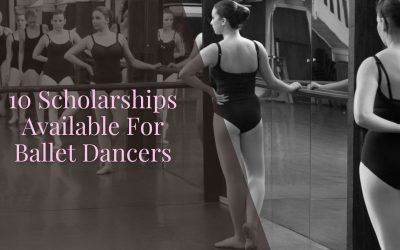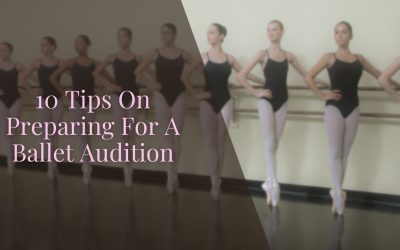
Crafting a ballet resumé is a unique art form in itself. It’s more than just a list of experiences, it’s your chance to showcase your training, talent and professionalism in a concise, polished format. Whether you’re auditioning for a company, a summer intensive, or an academic program, your resumé is often your first impression. To help you stand out for all the right reasons, here are 10 essential things to include in a ballet resumé.
1. Contact Information Let’s start with the basics. Your name should be at the top in a bold, professional font, followed by your current address, phone number and email. Make sure your email address is simple and professional (e.g., firstname.lastname@email.com). If you have a personal dance website or online portfolio, include that too. It’s a great way for directors to see more of your work.
2. Headshot and Dance Photo Most ballet resumés are accompanied by two key visuals: a clear, professional headshot and a full-body dance photo in first arabesque or another classical position. These photos should reflect your current appearance and technical ability. Keep them clean, well-lit and appropriate to the context you’re applying for.
3. Personal Statistics Height, weight, eye colour and hair colour are often included, especially when applying for professional contracts. Some companies also request additional details like date of birth or citizenship status. Only include what’s requested and be honest. This section should be discreet and factual.
4. Training Background Detail your formal ballet education, including schools attended, dates of study and major instructors. Start with your most recent training and work backward. Include notable workshops or intensives, especially those hosted by major institutions or led by prominent figures in the ballet world.
5. Performance Experience This is the heart of your resumé. List performances chronologically or by type (e.g., classical roles, contemporary work, guest performances). Include the role, production, company or school, choreographer and date. Highlight leading roles or unique experiences—this is your moment to shine!
6. Repertoire If you have an extensive background, you might include a separate section highlighting your repertoire. This could include classical variations, contemporary works, ensemble pieces or original choreography. This list helps directors quickly assess your range and versatility as a dancer.
7. Awards and Recognitions Have you won any scholarships, competitions or special honours? These achievements demonstrate your dedication, skill and recognition within the dance community. Even local or school-based awards are worth including, especially if they show progress or leadership.
8. Additional Skills Directors often appreciate dancers who bring a little something extra to the table. Can you sing, act, tumble or play an instrument? Have you studied other dance styles like jazz, modern or flamenco? These skills might not be central to classical ballet but can open doors in more diverse repertory or crossover productions.
9. References If space allows, include two or three professional references who can speak on your work ethic, technique and artistry. Be sure to ask permission before listing someone and include their name, title, organization, phone number and email address. Alternatively, you can simply write “References available upon request.”
10. Clear, Clean Formatting This might seem obvious, but it’s crucial: your resumé should be easy to read. Stick to one or two professional fonts, use bullet points for clarity and keep the layout clean. Avoid overly decorative elements or colours. A one-page resumé is standard for most dancers unless you have significant experience to warrant a second page.
Bonus Tips:
- Tailor your resumé to the specific role or program you’re applying for.
- Proofread carefully as typos can look unprofessional.
- Update regularly to reflect your most recent experiences and training.
Final Thoughts Your ballet resumé is your personal spotlight in paper form. It should reflect not just your skills and experiences, but your attention to detail and professionalism. With these ten components in place, you’ll be well on your way to catching the eye of directors and casting panels. Remember, every dancer has a unique story, so use your resumé to tell yours.
You Might Also Like…
10 Scholarships Available For Ballet Dancers
Ballet is a beautiful, demanding art form—and it often comes with a hefty price tag. From tuition fees and pointe shoes to travel costs for auditions and performances, pursuing ballet at a high level requires serious financial investment. But don't let money hold you...
10 Tips On Preparing For A Ballet Audition
Attending a ballet audition can be an exhilarating yet nerve-wracking experience. Whether you are auditioning for a prestigious ballet school, a dance company, or a specific production, thorough preparation is key to showcasing your skills and making a lasting...
The Top 20 Touring Ballet Companies
Here is a list of the top 20 touring ballet companies in the world, renowned for their excellence in performance and extensive touring schedules: Bolshoi Ballet Location: Moscow, Russia Description: One of the oldest and most prestigious ballet companies in the world,...



